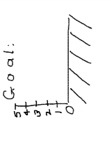First Days of a New Year
There is always so much to do in the first few days of a new school year, but establishing good relationships with students is my first priority.
Welcoming students into the room with a smile and personal acknowledgement, directing students to where they can place their belongings and where they can sit are my essentials. I have found over the last few years that actually placing students in set seats, rather than allowing them to sit anywhere takes out the apprehension felt by some less socially confident students. Introducing students to each other, especially those at their table is also very important.
After reading an introductory letter to students which outlines lessons structures with specialist teachers, curriculum areas covered, and routines such as Crunch and Sip and Homework expectations, students are provided opportunities to ask any questions we haven’t covered. I like to explain that the priorities over the first few weeks will be to establish good working relationships, organise equipment and materials, and share out classroom responsibilities.
This year getting straight into designing their own tray labels gave students an opportunity to have some social chat time with people at their table. The task required students to fill a tray label template with images which represented interests and symbols that represented them. Early finishers went on to start labelling books and pencils, as I helped students to attach the labels to trays. By the end of this time, a bit of colour and personal flavour had been added to the classroom.
A game of three truths and I lie further helped to get to know a bit about each other. This year instead of just getting one student at a time to guess which was the lie, I introduced a visible thinking strategy that I plan to use frequently, and which demands that each person participates. Each student had to show which of the four options was a lie by holding up the corresponding number of fingers. For example, if I though a student’s first response was the lie I would hold up one finger. If I thought the fourth option was the lie I would hold up four fingers. This showed clearly what each person was thinking. It was also a safe way of introducing this strategy – fun and non-threatening.
Library borrowing after recess gave us an opportunity to cool down a bit in the air-conditioned comfort. Our classroom air-conditioner was struggling with the 37 degree temperature!
As a staff we have made a commitment to introduce the Keeping Children Safe: Child Protection curriculum and are following the recommended scope and sequence. After returning from the library we discussed what makes a safe classroom environment. Students worked in pairs to represent what they thought a safe classroom should “Look like,” “Sound like,” and “Feel like.” Reporting back ideas so that we had a class collation of ideas gave us an opportunity to practice listening to the one person speaking, maintaining eye contact, and listening carefully so that ideas weren’t repeated.
The results of this brainstorm were later typed up and published on the class blog.
Having this as a reference point in the classroom has been good to refer back to. One idea in particular, I have found useful to refer to: ” a class with potential.” This statement that one of the students used to describe what a safe class should look like, has come in handy when giving verbal feedback to the class as a whole. I have been able to give lots of positive feedback to the class in relation to good listening skills, and the depth of thought and effort put into work.
Another task I like to get students to complete on the first day is a survey. As well as providing me with some valuable information, such as whether or not students have access to computers and internet facilities at home, I explain that this survey is a way for us to find out what are the special features of our class. I would like to look out for opportunities to connect with other classes, including those in other parts of the world, and being able to describe our class and make comparisons would be very worthwhile. It also provides a great stimulus for investigating the Statistics part of the Australian Curriculum: Mathematics. It would be great to ask other classes to also complete the survey and make comparisons.
Survey 2014
After articulating what I expected students to do to get ready for home, separating their belongings into those that needed to go home and those that needed to stay in trays at school, students practised this pack up routine. Further reinforcement will be needed to develop this as a good habit. We finished the day by using a visible thinking strategy (5 fingers of one hand) to show how students were feeling about their first day back at school. All students had had a good first day, giving either 4 or 5 as their rating.
A good start to the 2014 school year.

